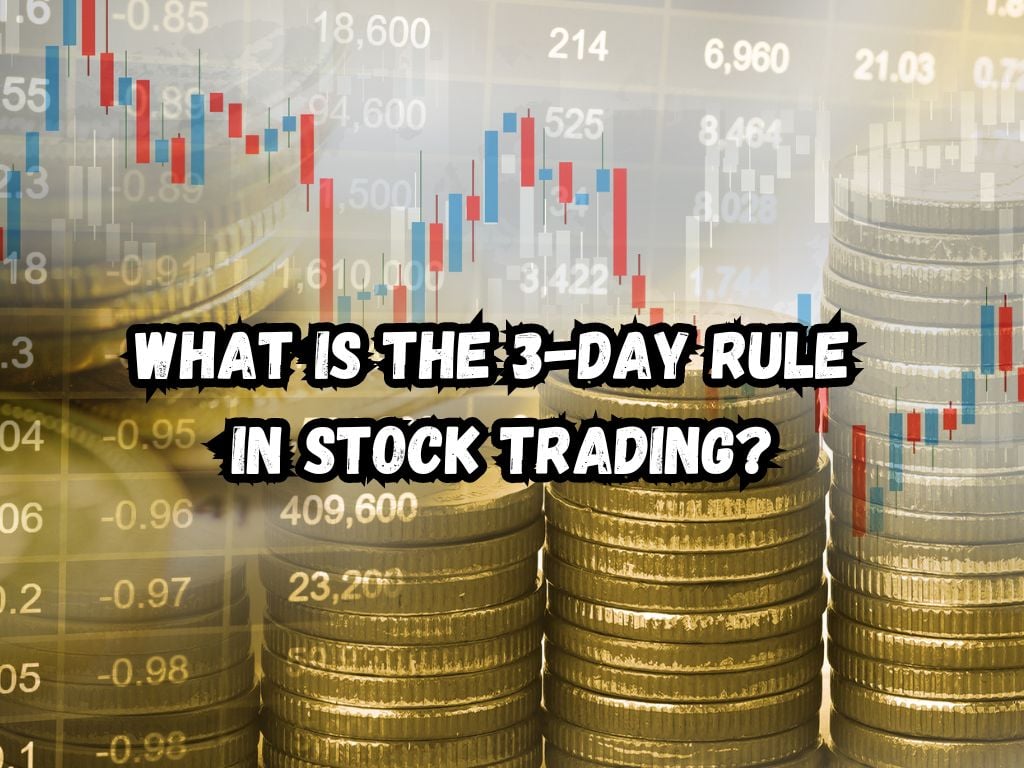Stock trading comes with its set of principles and strategies. Among these, certain rules stand out for their ability to guide decision-making.
The 3-Day Rule in stock trading is such a strategy, designed to inform investors on the optimal timing to buy stocks following a significant dip.
This article aims to explore the concept of the 3-Day Rule, its mechanics, benefits, limitations, and how it can be a part of your trading strategy.
What Is the 3-Day Rule in Stock Trading?
The 3-Day Rule is an informal stock trading strategy. It suggests that an investor should wait for three days after a substantial drop in a stock’s price before purchasing it.
This rule stems from the belief that stocks often continue to decline for the first two days following a significant drop, with a potential rebound or stabilizing on the third day. Its origins are rooted in trading psychology, aiming to counteract knee-jerk reactions and allow for measured decision-making.

Understanding the Mechanics of the 3-Day Rule
At its core, the 3-Day Rule encourages patience. When a stock’s price falls sharply, an immediate reaction might lead to a poor decision.
By waiting three days, an investor has the time to observe the stock’s performance, examining if the drop was a temporary setback or indicative of a deeper issue. This waiting period helps in making an informed decision, potentially leading to a wiser investment choice.
Benefits of the 3-Day Rule in Trading
The main advantage of the 3-Day Rule is its ability to mitigate emotional decision-making. It compels the investor to pause, assess the situation, and avoid making impulsive purchases.
This strategy also allows time to evaluate the fundamentals of the company and the market’s reaction to whatever caused the drop. Thus, it helps in avoiding purchases during what might simply be a temporary recovery, known as a dead-cat bounce.
Limitations and Considerations
However, the 3-Day Rule is not without its limitations. There is no guarantee that a stock will recover after three days. In fact, the price might continue to fall.
It’s also important to conduct a thorough analysis beyond this period, as the rule should not be the sole factor in making investment decisions. Market volatility may lead to exceptions where the rule does not apply as expected.
When to Apply the 3-Day Rule
The 3-Day Rule is most applicable in scenarios where a stock’s price has dropped significantly due to temporary setbacks rather than fundamental flaws within the company.
Situations like market overreactions to news events can create opportunities where this rule might be beneficial. However, understanding market trends and news is crucial in determining when to apply it effectively.
How to Implement the 3-Day Rule in Your Trading Strategy
To implement the 3-Day Rule, start by monitoring stocks that experience a considerable drop. Observe their performance over the next three days, analyzing company news and market trends.
Incorporate other analytical tools such as technical analysis or fundamental analysis to make an informed decision. Adjust your strategy based on the outcomes and always stay prepared for market volatility.
Alternative Strategies and Comparative Analysis
While the 3-Day Rule offers certain advantages, comparing it with other trading strategies like dollar-cost averaging or using stop-loss orders is crucial.
Each method has its pros and cons, and the effectiveness can vary based on the investor’s style, market conditions, and the specific stocks in question.
Case Studies and Historical Analysis
Looking at historical instances where the 3-Day Rule was effective can offer valuable insights. However, it’s equally important to review cases where it fell short.
This analysis helps in understanding the rule’s applicability and limitations, providing a more grounded perspective on its utility in trading.

Pro Tips for Using the 3-Day Rule
Implementing the 3-Day Rule successfully requires staying informed on market news and company performance. Diversification can help mitigate risks associated with relying on this rule alone.
Patience and discipline play a vital role in stock trading, especially when applying this rule. Combining the 3-Day Rule with technical and fundamental analysis can enhance decision-making.
Frequently Asked Questions
What happens if the stock continues to drop after three days?
If the stock price continues to fall, it may suggest deeper issues within the company or market than initially anticipated. It’s crucial to reassess your position based on current information and broader market trends.
Can the 3-Day Rule be used for any stock or investment?
While the rule can be applied broadly, it’s more effective with stocks that have strong fundamentals but have experienced a temporary setback.
Is the 3-Day Rule suitable for both short-term and long-term trading?
The rule is generally used as a short-term trading strategy. However, the assessments made during this period can also inform long-term investment decisions.
How does the 3-Day Rule differ from the T+2 settlement cycle?
The 3-Day Rule refers to a trading strategy focusing on timing after a price drop, while the T+2 settlement cycle is a regulatory requirement dictating the settlement period for securities transactions.
Conclusion
The 3-Day Rule in stock trading offers a structured approach to making purchasing decisions after a significant price drop. By encouraging a period of observation and analysis, the rule aims to reduce impulsive decisions and improve the likelihood of investing success.
However, its effectiveness depends on the broader context of the market and the specific circumstances surrounding the stock.
Like any strategy, the 3-Day Rule should be one tool among many in an investor’s arsenal, applied thoughtfully and in conjunction with comprehensive analysis and sound trading principles.


 Tags:
Tags:










